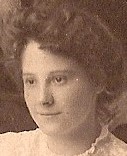 We continue with the heritage of Myrtle Woodruff, alumnus of the Norwalk High School Class of 1907.
We continue with the heritage of Myrtle Woodruff, alumnus of the Norwalk High School Class of 1907.
In my last post, I described the arrival on February 10, 1817 of the Woodruff and Laurence families at the “Village House,” a small cabin in the wilderness of Norwich Township. When I read stories like these, I usually have a hard time picturing where events took place. The old records often describe places in relation to landmarks that those living then would relate to, but are a complete mystery to me. [1]
So I decided to investigate
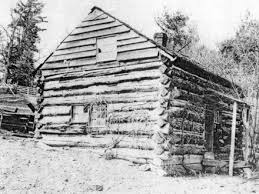 According to the March 1860 issue of The Firelands Pioneer and WW Williams’ book, the village house was located “on the village plat, where Durwin Boughton’s house now stands.” This didn’t tell me much. I have not found any record (so far) to tell me where Durwin Boughton lived in 1860. Also, the “village plat” refers to a town laid out by surveyors in the spring of 1816, but never developed.
According to the March 1860 issue of The Firelands Pioneer and WW Williams’ book, the village house was located “on the village plat, where Durwin Boughton’s house now stands.” This didn’t tell me much. I have not found any record (so far) to tell me where Durwin Boughton lived in 1860. Also, the “village plat” refers to a town laid out by surveyors in the spring of 1816, but never developed.
I do, however, have this tidbit, also from the March 1860 issue of The Firelands Pioneer: “They also surveyed and laid out the village plat of Barbadoes, on the west end of lot 38, second section, and the adjoining east end of lot 6, third section, where Durwin Boughton and George H. Woodruff now live.” [2]
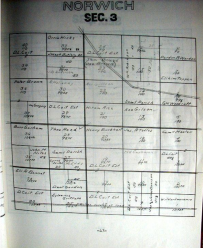
 Now I had something to work with. A Google search turned up the 1845 plat maps for Huron County. [3] Above are the plat maps for the second and third sections of Norwich Township.
Now I had something to work with. A Google search turned up the 1845 plat maps for Huron County. [3] Above are the plat maps for the second and third sections of Norwich Township.
Lot 6 of Section 3 is third lot down on the far right of the “Sec. 3” plat, and Lot 38, of Section 2 is also third down, but on the far left of the “Sec. 2” plat. Note that G.W. Woodruff is the owner of Lot 6 in Section 3.
Below is a view of approximately where these two lots are in Norwich Township today.
.
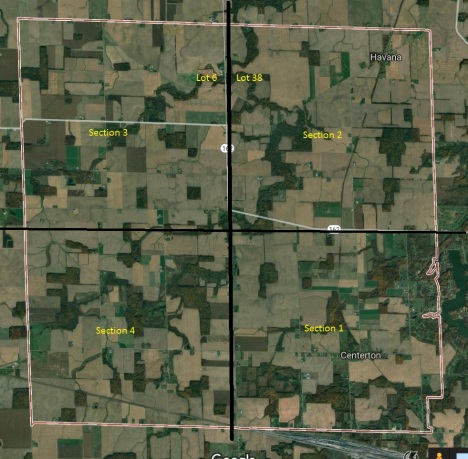
By comparing this satellite image with the 1845 Plat map, and the facts I gleaned from the historical accounts, I feel I can make an educated guess of where the “Village House” was located
Let’s assume that Road 195 in the satellite image follows the route of Buell’s Road [4] (zooming in on the satellite image, I found that this road is is labeled “Old Military Road”), and that Section Line Road 30 S is the division between Sections 2 and 3. If we accept those assumptions, we may conclude that the proposed village of Barbadoes was laid out just south of Mud Run (which will be discussed in a later post) on both sides of the section line and bisected by the “Old Military Road.” This leads me to believe that the Village House, which the Woodruff and Laurence families occupied on February 10, 1817, was located somewhere near the farm buildings located southeast of the intersection of Section Line Road 30S and Road 195.
Does this make sense? Post a comment and let me know what you think.
Next up: what transpired with the Woodruff and Laurence families in the days following their arrival at Village House.
Notes:
[1] My father was a land surveyor in Lorain County, Ohio, which is next to Huron County. He once told me he found a description in the old records that began “in the middle of the snowbank.” As he explained it to me, in those days, it must have been common knowledge that every winter a large snowdrift would form at the same location. Great for the people living at that time, not so good for my dad.
[2] John Niles, “Memoirs of Norwich Township,” The Firelands Pioneer; Volume II, number 2; The Firelands Historical Society; March, 1860, pages 32-46, and W.W. Williams, “Norwich Township,” History of the Fire-Lands Comprising Huron and Erie Counties, Ohio, with Illustrations and Biographical Sketches of Some of the Prominent Men and Pioneers, Press of Leader Printing Company, Cleveland Ohio, 1897, pages 417-425.
[3] Online Index to the Plat Book of ca 1845, Huron County, Ohio, The US Gen Web Project for Huron County, Ohio.
[4] Beall Trail was cut through the wilderness by General Reasin Beall and his army in 1812 from Wooster to Fremont, Ohio. It passed through what would become New Haven and Norwich Townships. The Woodruff and Laurence party followed this trail from New Haven to their new home in 1817.
Filed under: Buried on the Banks of Mud Run, Frontier Life, Myrtle Woodruff, New York, Norwalk HS Class of 1907, Norwich Township Ohio, Ohio, Uncategorized | Tagged: Firelands History, Laurence Genealogy, Norwich Township Ohio, Ohio History, Sufferers' Land History, Woodruff Genealogy | 3 Comments »



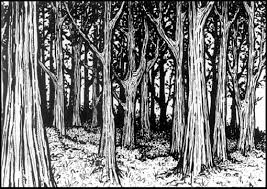 The party consisted of him and his new wife Hannah, his father Chauncey and his sister Elizabeth, and Wilder and Roxanna Laurence and their nine children. A few friends rounded out the group. [3]
The party consisted of him and his new wife Hannah, his father Chauncey and his sister Elizabeth, and Wilder and Roxanna Laurence and their nine children. A few friends rounded out the group. [3]